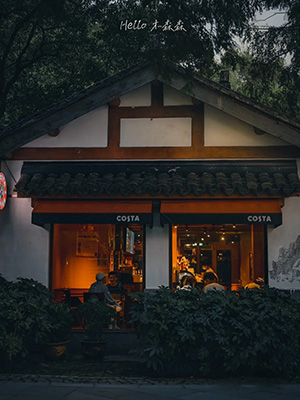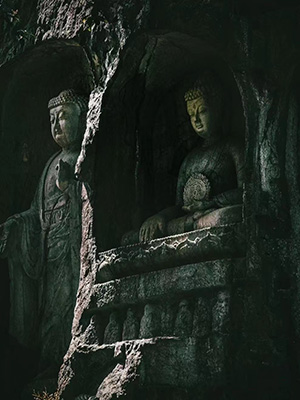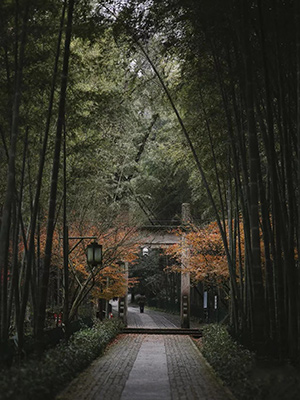The history of Hangzhou has already been more than 2200 years. People repute Hangzhou as ‘Heaven on earth because of its beautiful views. Benefitting from the Jing-Hang Grand Canal, the convenient treaty ports, and the developed silk and tea industries, Hangzhou was once one of the most critical commercial distribution centers. In the recent 15 years, driven by Alibaba and other high-tech enterprises, the Internet economy has become a new economic growth point in Hangzhou.
Must-see attractions in Hangzhou
. West Lake




The West Lake is one of the essential attractions in Hangzhou, including more than 100 parks, more than 60 national, provincial and municipal cultural relics protection units, and more than 20 museums. The scenery of West Lake is like a natural picture. Whether it is people who have lived here or travelers passing by in a hurry, they are all overwhelmed by this unparalleled beauty in the world. In spring, along Su Causeway and Bai Causeway, peach blossoms are in full bloom, willow trees hang along the bank. The mountains in the distance are hazy with colors of cyan, fresh and dark green. Walking along causeways, you will be amazed by the scenery and even enchanted, wondering if you have entered a paradise outside the world. The beauty of West Lake is not unique in spring. The lotuses in summer, the moon’s reflection in the lake at the autumn night, red plums after a winter snow, also the singing of the nightingale in the willow tree and the terrace in the misty rain. No matter when you come, you will appreciate the unusual style. I recommend hiking, bike, or taking a boat for the famous ‘Ten views of West Lake.’
. Nanshan Road




Before the Republic of China, Nanshan Road was initially along the west wall of Hangzhou City, with the inner city on the east and West Lake on the west. There are historical relics of thousands of years between the two ancient city gates. There are both the legendary Golden Bull in the Han Dynasty, the Qianwang Temple dedicated to the five kings of Wu and Yue, and the Southern Song Dynasty Royal Park Jujing Garden. Wu Mountain and Phoenix Mountain on the east side of Nanshan Road used to be the political centers of the ancient government offices’ office directors and the concentrated residences of high-ranking officials. After the Republic of China, the city wall to the west of Hangzhou was demolished, the barrier between the lake and the city disappeared, and Nanshan Road began to take shape. The bungalows and villas on both sides of Nanshan Road that have been preserved to this day also sealed up a memory of the Republic of China on Nanshan Road. One side of Nanshan Road is rich in history, and on the other side is the romance of culture and art. Whenever Nanshan Road is mentioned, people will unconsciously think of the art galleries, bookstores, and cafes along this road and think of literature and art, romance, etc.
. Linyin Temple




Lingyin Temple is a famous Buddhist temple in China with more than 1700 years. It is one of the ten ancient temples of Zen Buddhism in China. The founder of the Lingyin Temple was the monk Huili from West India. The building of the temple is backed by the North Peak and faces Feilai Peak. It is hidden in the mountains and forests, and the environment is quiet. More than 470 Buddha statues of various periods are carved on the caves and cliffs of Feilai Peak.
. Faxi Temple




Faxi Temple is located in the south of Lingyin Temple, Hangzhou. The temple was built in the 10th century and had a history of more than one thousand years. It was a temple for seeking rain in ancient times, but now it is a temple for seeking marriage. So many young people are attracted to pray for blessings.
. Yunqi Bamboo-lined Path




Anyone who has seen the movie “Crouching Tiger, Hidden Dragon” will never forget the vast bamboo sea in the film. The Yunqi Bamboo-lined Path is just the filming location. As early as 100 years ago, this place was listed as one of the “Eighteen Views of West Lake.” The “Yunqi Bamboo-lined Path” landscape refers to the lush forested hillside landscape in Yunqiwu: ancient temples in the deep mountains and the sound of bamboo trails.
. Gongchen Bridge & Bridge West Bank Historical District




The 400-year-old Gongchen Bridge marks the end of the Beijing-Hangzhou Grand Canal and is Hangzhou’s precious and ancient cultural heritage. It witnessed the historical changes on both sides of the bridge and recorded the development of the city of Hangzhou. The west bank area of Gongchen Bridge developed into a prosperous land and water terminal more than 150 years ago. Nowadays, there are still intact residential buildings more than 100 years ago, and many modern times industrial remains in the block. At the same time, the Chinese Scissors and Sword Museum, the Chinese Umbrella Museum, and the Chinese Fan Museum are located here.
. Xiaohezhi Street




The historical and cultural district of Xiaohezhi Street is located in the north of Hangzhou, at the confluence of the Beijing-Hangzhou Grand Canal, Xiaohe, and Yuhang Tanghe. The overall style and spatial characteristics of the residential and shipping facilities in the historical and cultural district of Xiaohezhi Street are still basically preserved and have a certain scale. The block truly reflects the living environment of the lower class people along the canal in the late Qing Dynasty and the early Republic of China. It retains a certain number of historical buildings, and its architectural features, streets and lanes, and canal shipping relics still have their unique features.
. Meijiawu Tea Culture Village




Meijiawu is an ancient village with a history of more than 600 years, with more than 2,300 mu of tea gardens, more than 500 rural households, 1274 permanent agricultural population, and 502 residents. As a famous Longjing tea production base in Hangzhou, Meijiawu Village has beautiful natural landscapes and rich human resources. Many heads of state and government have visited here.
. China National Silk Museum




The China National Silk Museum is the largest globally, showing China’s five thousand years of silk history and culture. Its primary display includes five parts: The preface hall, The historical-cultural relics hall, The silk hall, The dying and weaving hall, The modern achievement hall. The China National Silk Museum contains historical-cultural relics related to silk in various dynasties since the Neolithic Age, especially the fabrics of the Han and Tang Dynasties unearthed along the Silk Road, the Liao and Jin object from the northern grasslands, the Song Dynasty costumes in the Jiangnan area, and the Ming and Qing Dynasties. Official machine products as well as modern cheongsam and landscape fabrics. In addition, there are many ethnic, cultural relics and modern cultural relics.
. China Tea Museum




As the capital of the Southern Song Dynasty, Hangzhou has many Tang and Song-style buildings. The China Tea Museum has full of ancient charm and style. The museum is backed by Wulao Peak, close to the West Lake Scenic Area, and surrounded by tea gardens with the history of tea development in great detail on all continents of the world. There are many cultural relics of various tea-making and tea-drinking utensils. The pavilions in the garden are very style, and the stream under the bridge brings people back to the Tang and Song dynasties.

